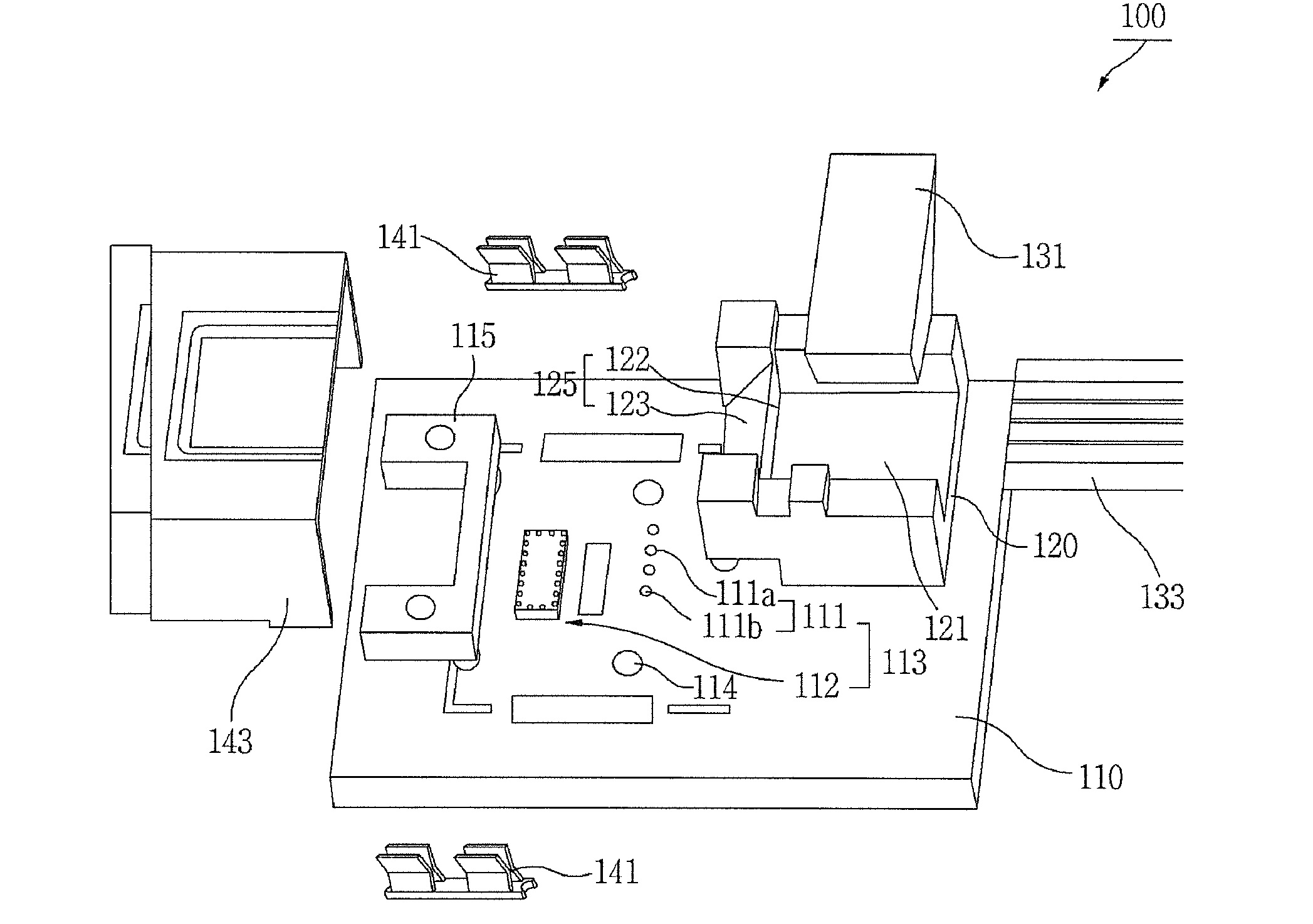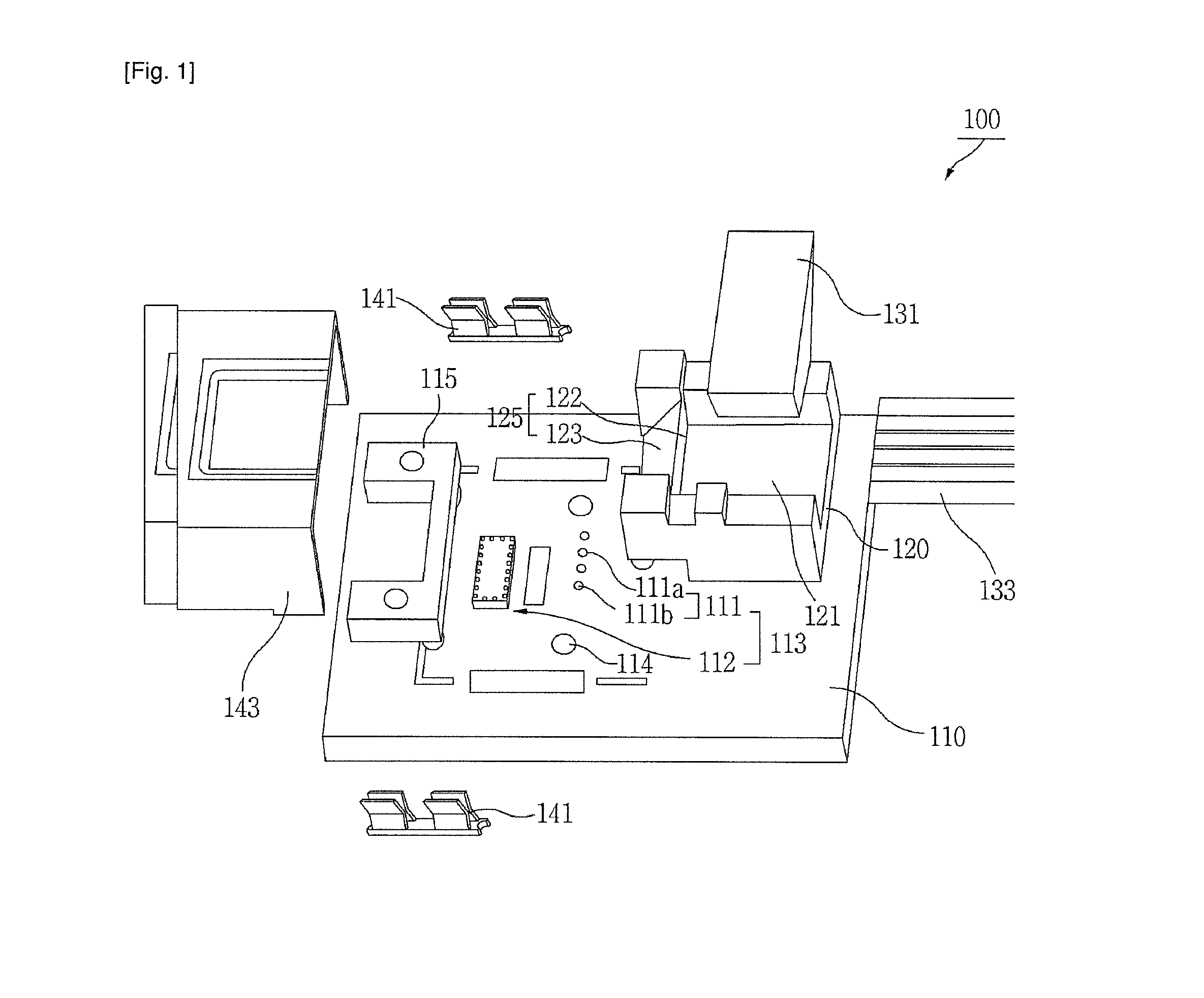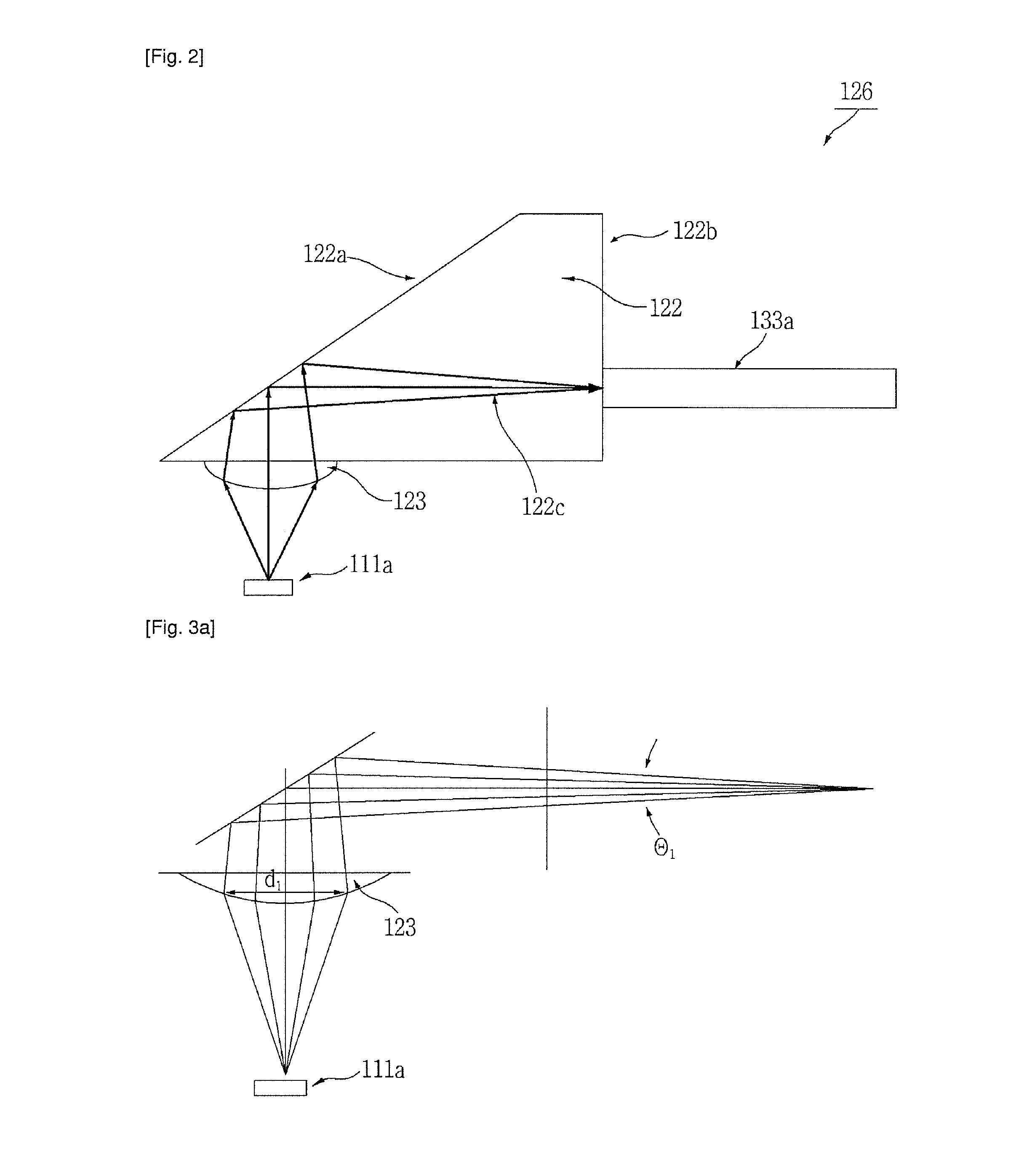Optical transmission and receiving device for implementing passive alignment of components and method for passively aligning components
- Summary
- Abstract
- Description
- Claims
- Application Information
AI Technical Summary
Benefits of technology
Problems solved by technology
Method used
Image
Examples
Embodiment Construction
[0108]FIG. 11 illustrates a method of aligning parts with respect to holes in the substrate without using an alignment reference part, according to another embodiment of the present invention.
[0109]Referring to FIG. 11, a method of aligning parts according to another embodiment includes a first step of aligning the light-emitting elements 111a and the light-receiving elements 111b in particular intervals on the substrate 110 with the holes 114 of the substrate as alignment points, a second step of aligning the lens-optical fiber connection part 120 with the holes 114 of the substrate as alignment points, and a third step of aligning the optical fiber 133 with the optical fiber connector 121 to complete the optical alignment.
[0110]With this method, the substrate holes 114 are used as reference for the optical alignment, so that the alignment reference part 115 for optical alignment can be removed, and the number of parts can be reduced.
[0111]The major component parts included in the ...
PUM
| Property | Measurement | Unit |
|---|---|---|
| Transparency | aaaaa | aaaaa |
| Refractive index | aaaaa | aaaaa |
| Optical properties | aaaaa | aaaaa |
Abstract
Description
Claims
Application Information
 Login to View More
Login to View More - R&D
- Intellectual Property
- Life Sciences
- Materials
- Tech Scout
- Unparalleled Data Quality
- Higher Quality Content
- 60% Fewer Hallucinations
Browse by: Latest US Patents, China's latest patents, Technical Efficacy Thesaurus, Application Domain, Technology Topic, Popular Technical Reports.
© 2025 PatSnap. All rights reserved.Legal|Privacy policy|Modern Slavery Act Transparency Statement|Sitemap|About US| Contact US: help@patsnap.com



